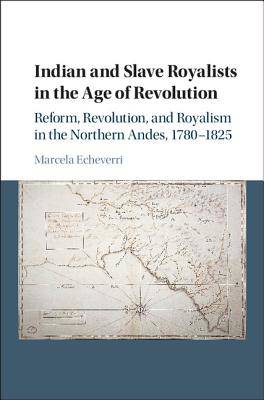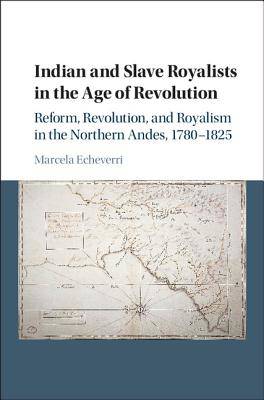
- Afhalen na 1 uur in een winkel met voorraad
- Gratis thuislevering in België vanaf € 30
- Ruim aanbod met 7 miljoen producten
- Afhalen na 1 uur in een winkel met voorraad
- Gratis thuislevering in België vanaf € 30
- Ruim aanbod met 7 miljoen producten
Zoeken
Indian and Slave Royalists in the Age of Revolution
Reform, Revolution, and Royalism in the Northern Andes, 1780–1825
Marcela Echeverri
€ 172,95
+ 345 punten
Uitvoering
Omschrijving
Royalist Indians and slaves in the northern Andes engaged with the ideas of the Age of Revolution (1780-1825), such as citizenship and freedom. Although generally ignored in recent revolution-centered versions of the Latin American independence processes, their story is an essential part of the history of the period. In Indian and Slave Royalists in the Age of Revolution, Marcela Echeverri draws a picture of the royalist region of Popayán (modern-day Colombia) that reveals deep chronological layers and multiple social and spatial textures. She uses royalism as a lens to rethink the temporal, spatial, and conceptual boundaries that conventionally structure historical narratives about the Age of Revolution. Looking at royalism and liberal reform in the northern Andes, she suggests that profound changes took place within the royalist territories. These emerged as a result of the negotiation of the rights of local people, Indians and slaves, with the changing monarchical regime.
Specificaties
Betrokkenen
- Auteur(s):
- Uitgeverij:
Inhoud
- Aantal bladzijden:
- 294
- Taal:
- Engels
- Reeks:
- Reeksnummer:
- nr. 102
Eigenschappen
- Productcode (EAN):
- 9781107084148
- Verschijningsdatum:
- 25/04/2016
- Uitvoering:
- Hardcover
- Formaat:
- Genaaid
- Afmetingen:
- 158 mm x 238 mm
- Gewicht:
- 535 g

Alleen bij Standaard Boekhandel
+ 345 punten op je klantenkaart van Standaard Boekhandel
Beoordelingen
We publiceren alleen reviews die voldoen aan de voorwaarden voor reviews. Bekijk onze voorwaarden voor reviews.











